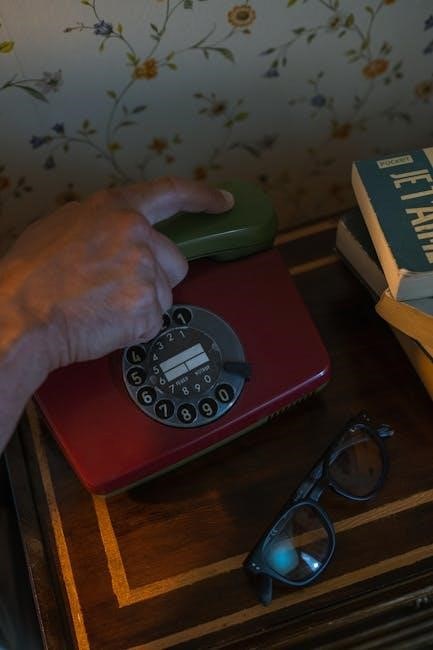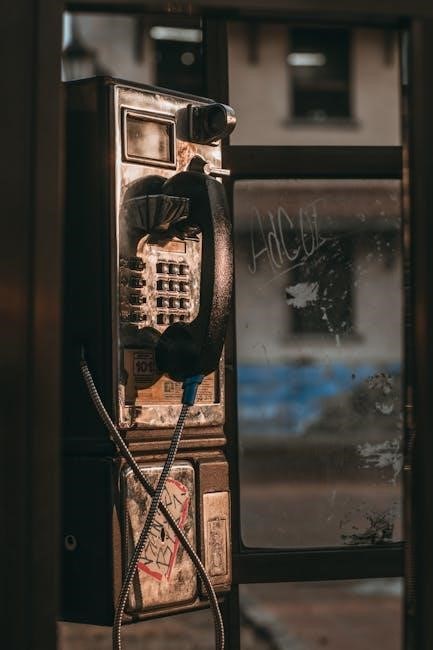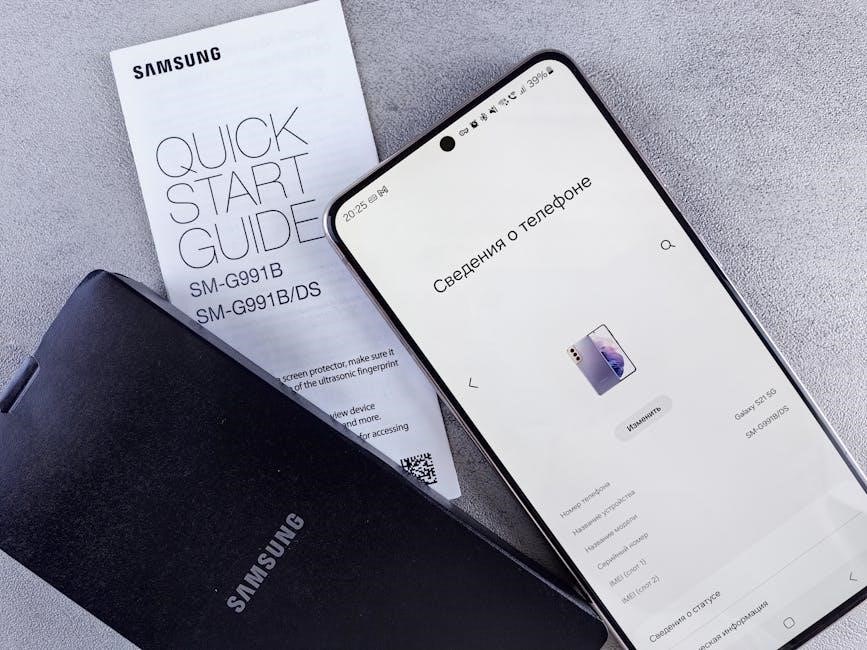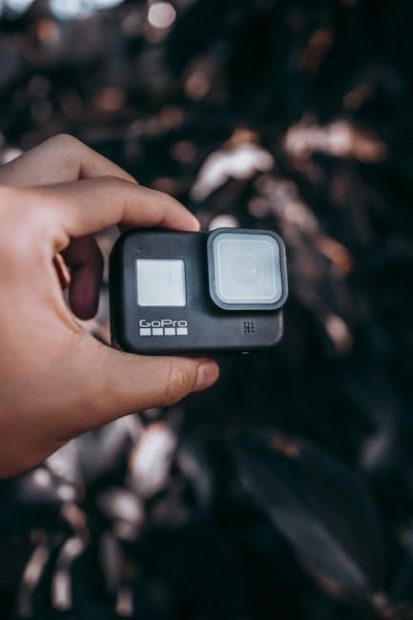Uniden DECT 6.0 Phone Manual: A Comprehensive Guide
This guide provides detailed instructions for Uniden DECT 6.0 phones‚ covering setup‚ operation‚ and troubleshooting for models like DECT1580-2‚ D1780‚ and DECT1560.
Access PDF manuals and learn about features like caller ID‚ answering systems‚ and custom greetings‚ ensuring optimal performance of your Uniden cordless phone.
Uniden’s DECT 6.0 technology represents a significant advancement in cordless phone communication‚ offering enhanced clarity‚ security‚ and range compared to older standards. DECT 6.0 (Digital Enhanced Cordless Telecommunications) operates on a different frequency band‚ minimizing interference from other wireless devices like Wi-Fi routers and Bluetooth gadgets. This results in fewer dropped calls and a consistently clearer connection.
Furthermore‚ DECT 6.0 incorporates advanced encryption methods‚ safeguarding your conversations from eavesdropping. Uniden leverages this technology across a range of models‚ including the DECT1580-2‚ D1780‚ D1484/D1481‚ DECT1560‚ and DECT 1735‚ providing users with reliable and secure home phone solutions. The technology ensures compatibility and interoperability within the DECT 6.0 ecosystem‚ allowing for seamless expansion with additional handsets. Understanding these core benefits is crucial for maximizing your Uniden DECT 6.0 phone experience.
Understanding DECT 6.0 Features
Uniden DECT 6.0 phones boast a suite of features designed for convenience and enhanced communication. Caller ID allows you to see who’s calling before you answer‚ while call waiting notifies you of incoming calls during an existing conversation. Many models‚ like the D1780 and DECT1560‚ include a robust answering system with customizable greetings and message storage.
Additional features often include large‚ backlit displays for easy readability‚ and convenient keypads for simple dialing. The speakerphone function enables hands-free communication‚ ideal for multitasking. Interference reduction technology ensures clear audio‚ even in environments with other wireless signals. Accessing these features is straightforward‚ with user-friendly menus and intuitive controls. Detailed instructions for each feature are available in the specific model’s manual (e.g.‚ D1484/D1481‚ DECT1580-2‚ DECT 1735).

Setting Up Your Uniden DECT 6.0 Phone
Proper setup involves unboxing components‚ connecting the base unit’s AC adapter‚ and fully charging the handset before initial use‚ as detailed in the manual.
Unboxing and Component Check
Carefully unpack your Uniden DECT 6.0 phone system and verify all components are present. The package should include the base unit‚ at least one handset‚ a battery pack for the handset‚ an AC power adapter for the base unit‚ a phone line cord‚ and potentially a belt clip.
Consult the user manual (like the DECT1580-2 manual available as a PDF) to confirm the exact contents for your specific model – D1780‚ D1484/D1481‚ DECT1560‚ or DECT 1735.
Inspect each item for any signs of damage that may have occurred during shipping. If anything is missing or damaged‚ immediately contact Uniden Customer Care for assistance. Do not attempt to use damaged components. A thorough component check ensures a smooth setup process and optimal performance of your new phone system.
Connecting the Base Unit
Begin by placing the Uniden DECT 6.0 base unit on a stable‚ level surface‚ away from excessive moisture‚ heat‚ and direct sunlight. Connect the provided AC power adapter to the base unit and plug it into a working electrical outlet.
Next‚ connect the phone line cord to the “Line” port on the back of the base unit and the other end to a standard telephone wall jack. Ensure the connection is secure. Refer to your model’s manual (D1780‚ D1484/D1481‚ DECT1560‚ or DECT1580-2 – PDF versions are readily available online) for specific port locations.
Verify that the base unit’s power indicator light illuminates‚ signifying it’s receiving power. A solid or blinking light indicates proper connection. If no light appears‚ check the power adapter and outlet. Proper base unit connection is crucial for phone functionality.

Charging the Handset

To initially charge your Uniden DECT 6.0 handset‚ place it securely in the base unit’s charging cradle. Ensure a solid connection between the handset’s charging contacts and the cradle’s terminals. The handset’s display should indicate it is charging‚ often with a battery icon.
A full charge typically takes approximately 7-10 hours for a new handset. Subsequent charges may take less time. Avoid removing the handset from the cradle during the initial charging period to ensure optimal battery capacity.
Refer to your specific model’s manual (DECT1580-2‚ D1780‚ D1484/D1481‚ DECT1560 – downloadable in PDF format) for detailed charging instructions and battery specifications. A fully charged handset provides several hours of talk time and extended standby duration.

Basic Operation of Your Uniden DECT 6.0 Phone
Learn to effortlessly make and receive calls‚ utilize the convenient speakerphone function‚ and precisely adjust the volume control for a personalized calling experience.
Making and Receiving Calls
To initiate a call on your Uniden DECT 6.0 phone‚ simply enter the desired phone number using the keypad and press the Talk button. The handset will display the call progress‚ and you’ll hear a dial tone. When the call connects‚ you can begin your conversation.
Receiving calls is equally straightforward. When an incoming call arrives‚ the phone will ring‚ and the caller’s information (if available through Caller ID) will be displayed on the screen. Press the Talk button to answer the call. To end a call‚ press the Talk button again or place the handset back onto the base unit.
Utilizing features like speed dial allows for quick access to frequently called numbers. Refer to your specific model’s manual for instructions on programming and using speed dial. Ensure the antenna is properly connected for optimal signal strength and clear call quality. Remember to check the battery level for uninterrupted conversations.
Using the Speakerphone
The speakerphone feature on your Uniden DECT 6.0 phone allows for hands-free communication. To activate the speakerphone during an incoming call‚ press the Speakerphone button. For outgoing calls‚ dial the number and then press the Speakerphone button before pressing Talk. The audio will then project from the handset’s speaker.
Volume control for the speakerphone is typically adjustable using the Volume Up and Volume Down buttons on the handset. Ensure the speakerphone is placed on a stable surface for optimal sound quality. Be mindful of your surroundings when using the speakerphone‚ as the conversation will be audible to others nearby.
To deactivate the speakerphone‚ press the Speakerphone button again or press the Talk button to switch to handset mode. Proper usage ensures clear communication without needing to hold the device. Refer to your model’s manual for specific speakerphone settings and features.
Adjusting Volume Control
Your Uniden DECT 6.0 phone offers adjustable volume control for both the handset and the speakerphone. During a call‚ use the Volume Up and Volume Down buttons located on the handset to increase or decrease the listening volume to your preference. These buttons typically allow for multiple levels of adjustment‚ ensuring comfortable audibility.
For ringer volume‚ navigate through the phone’s menu settings. Access the settings by pressing the Menu or Settings button‚ then locate the Ringer Volume option. Adjust the ringer volume to a suitable level‚ considering your environment and hearing preferences. Some models offer different ringer tones as well.
Refer to your specific model’s manual (D1780‚ D1484/D1481‚ DECT1560‚ or DECT1735) for detailed instructions on accessing and modifying volume settings. Proper volume adjustment enhances call clarity and ensures you don’t miss important incoming calls.

Advanced Features and Functions
Explore caller ID‚ call waiting‚ and the answering system on your Uniden DECT 6.0 phone‚ including recording personalized greetings for enhanced communication.
Caller ID and Call Waiting
Uniden DECT 6.0 phones offer robust Caller ID functionality‚ displaying the name and number of incoming callers‚ provided you have subscribed to the service from your telephone provider. This allows you to screen calls before answering‚ enhancing convenience and security.

To access the Caller ID log‚ typically you’ll use the “ID” or “Call Log” button on your handset. The phone stores a history of recent calls‚ allowing you to easily redial or review missed calls. The number of entries stored can vary depending on the specific model.
Call Waiting alerts you to a second incoming call while you are already on the phone. A distinctive tone will sound‚ indicating an incoming call. You can switch between calls using the appropriate handset buttons‚ allowing you to manage multiple conversations efficiently. Ensure call waiting is activated through your service provider for this feature to function correctly. Refer to your specific model’s manual for detailed instructions on navigating these features.
Answering System Setup and Usage
The Uniden DECT 6;0 answering system allows you to record and store messages when you are unavailable to answer calls. Initial setup involves setting the date and time‚ and recording a custom greeting. Access the answering system settings through the base unit or handset menu‚ typically using options like “Answering System” or “Voice Mail”.
You can choose between different recording options‚ such as a long greeting for general use and a short greeting for after-hours. The system’s memory capacity determines the number of messages it can store. To listen to messages‚ press the “Message” or “Play” button on the base unit or handset.
Features often include message time stamps‚ new message indicators‚ and the ability to delete messages individually or all at once. Refer to your specific model’s manual (like the DECT1580-2) for detailed instructions on customizing these settings and maximizing the answering system’s functionality.
Recording Custom Greetings
Personalizing your Uniden DECT 6.0 answering system with custom greetings enhances its usability. Access the greeting recording function through the base unit’s menu or‚ in some models‚ directly from the handset. Typically‚ you’ll navigate to “Answering System” then “Greeting Options”.
Before recording‚ listen to the existing greeting to understand the timing. When prompted‚ clearly state your greeting‚ keeping it concise and professional. Many models offer multiple greeting slots – one for general use and another for specific times or situations.
After recording‚ always listen back to ensure clarity and proper volume. If unsatisfied‚ simply re-record. The D1780 model‚ for example‚ allows for easy greeting customization. Refer to your specific model’s PDF manual (like the DECT1580-2) for precise instructions and troubleshooting tips regarding recording and playback.

Troubleshooting Common Issues
Resolve frequent problems like no dial tone‚ handset charging failures‚ or static interference by consulting this section for solutions and guidance specific to Uniden DECT 6.0.
No Dial Tone Troubleshooting
Experiencing a lack of dial tone on your Uniden DECT 6.0 phone can be frustrating‚ but several steps can help resolve the issue. First‚ ensure the base unit is securely connected to a working telephone jack and that the AC adapter is firmly plugged into both the base and a functioning power outlet.
Verify that the phone line is active by testing it with a known working corded phone. If the corded phone also lacks a dial tone‚ the problem likely lies with your telephone service provider‚ requiring you to contact them for assistance. Next‚ check the handset for proper battery charge; a low battery can sometimes mimic a no dial tone situation.
Additionally‚ confirm that the handset is correctly placed on the base unit for charging and synchronization. Try resetting both the base unit and the handset by disconnecting their power sources for approximately 10-15 seconds‚ then reconnecting them. Finally‚ if the issue persists‚ consult the full owner’s manual (available as a PDF online) for model-specific troubleshooting steps.
Handset Not Charging Solutions
If your Uniden DECT 6.0 handset isn’t charging‚ begin by inspecting the charging contacts on both the handset and the base unit. Ensure they are clean and free of any debris or corrosion; gently wipe them with a soft‚ dry cloth. Confirm the handset is seated correctly in the charging cradle‚ making solid contact with the charging pins.
Next‚ verify the AC adapter connected to the base unit is securely plugged into a working power outlet. Try a different outlet to rule out a faulty power source. Allow sufficient charging time – typically several hours – for a depleted battery to reach a usable charge level. If the handset still doesn’t charge‚ attempt a power reset of both the handset and base unit.
To reset‚ disconnect power to both for 15-20 seconds‚ then reconnect. Consult your specific model’s manual (D1780‚ D1484/D1481‚ DECT1560‚ or DECT1735) for detailed instructions and diagrams‚ as charging procedures can vary slightly. A failing battery may require replacement.
Static or Interference Resolution
Experiencing static or interference on your Uniden DECT 6.0 phone? Begin by relocating the base unit away from potential sources of interference‚ such as other electronic devices‚ microwaves‚ or cordless phones. Ensure the base unit isn’t positioned near metal objects or thick walls‚ as these can obstruct the signal.
Check for any physical obstructions between the handset and the base unit. Try moving to a different location within range to see if the interference diminishes. If using multiple cordless phones‚ ensure they operate on different frequency channels to avoid conflicts. Consult your model’s manual (DECT1580-2‚ D1780‚ D1484/D1481‚ DECT1560‚ or DECT 1735) for specific channel selection instructions.
Electromagnetic interference can sometimes be unavoidable. Consider using a headset with your Uniden phone for clearer audio. A power reset of both the handset and base unit can also resolve temporary interference issues. Refer to the manual for reset procedures.

Accessing Manuals and Support
Find downloadable PDF manuals for your Uniden DECT 6.0 phone (D1780‚ D1484/D1481‚ DECT1560‚ DECT1580-2‚ DECT 1735) and contact Uniden Customer Care for assistance.
Locating the DECT1580-2 Manual (PDF)
For users of the Uniden DECT1580-2 Digital Answering System‚ accessing the owner’s manual in PDF format is straightforward. Several online resources provide direct links to the complete guide. JustAnswer references a readily available PDF version‚ offering a convenient solution for those needing immediate access to documentation.
Alternatively‚ searching online for “Uniden DECT1580-2 manual PDF” will yield numerous results‚ including links to websites hosting the file. The manual‚ available through platforms like telephone-manual.com‚ details all aspects of the phone’s functionality. This includes setup instructions‚ operational guidance‚ and troubleshooting tips.
The PDF manual comprehensively covers the DECT1580 Series‚ outlining features and providing clear explanations for optimal use. It’s a valuable resource for understanding your phone’s capabilities and resolving any issues you may encounter. Ensure you download the manual from a reputable source to guarantee its authenticity and safety.
Finding Manuals for Specific Models (D1780‚ D1484/D1481‚ DECT1560‚ DECT 1735)
Uniden offers dedicated manuals for its diverse range of DECT 6.0 phone models. For the D1780‚ a PDF manual is directly accessible online‚ often highlighted as a frequently requested resource. Similarly‚ the D1484 and D1481 series share a combined user guide‚ available as a downloadable PDF detailing their shared functionalities.
The DECT1560 model boasts a comprehensive user manual covering setup‚ operation‚ features‚ maintenance‚ and troubleshooting. This detailed guide ensures users can maximize the phone’s capabilities. For the DECT 1735‚ a 36-page PDF manual is available‚ providing in-depth instructions and specifications.
Locating these manuals typically involves a simple online search using the model number and “manual PDF”. Websites specializing in user guides and the official Uniden support channels are excellent starting points. These resources ensure you have the correct documentation for your specific Uniden DECT 6.0 phone.

Uniden Customer Care Contact Information
For dedicated assistance with your Uniden DECT 6.0 phone‚ reaching their Customer Care team is crucial. While specific contact details aren’t explicitly provided in the readily available documentation‚ the manuals consistently advise contacting Customer Care immediately if any components are missing or damaged upon unboxing.
Generally‚ Uniden provides support through a dedicated Customer Care Line. Accessing their official website is the best method to obtain the most current contact number and support options. Online resources and FAQs can often resolve common issues before requiring direct contact.
When contacting support‚ having your phone’s model number (like DECT1580-2‚ D1780‚ or DECT1560) readily available will expedite the process. Be prepared to describe the issue in detail to ensure efficient troubleshooting and resolution.
